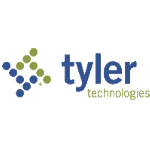What was the business problem(s) that your organization / project was facing, and why did you choose a digital adoption strategy to help you solve it?
The first time I had a large group discussion about developing learning content for our customers, it was because customers would mess up their system because they did not understand how the set-up impacted everything. My first thought was eLearning! My team was developed, and we created Tyler University – a place for our customers to easily learn the programs and how each piece ties together. We rolled out this eLearning content six year ago, and then moved to WalkMe in 2017. While most DAP are housed in a support environment, our strategy was to start at the beginning – when our software is first installed on a customer’s site. This way, our customers can make more informed decisions during analysis session, leading to a more successful implementation, and eventually resulting in less calls to the support teams. For 2019, we have had over 97,000 WalkThroughs, Smart WalkThroughs, and Resources taken by our customers, helping them learn extremely complex tasks, as well as gain an overall understanding of how our programs interact.
How did you use WalkMe among other strategies to address your challenges?
WalkMe first came to Tyler’s attention in 2016. We had just spent an entire year updating our Captivate content for the next version and had not even made it all the way through updating about 250 eLearning classes. Our customers also routinely complained that our Captivate courses did not match their data. Add in the fact that they had to take the classes on one monitor and follow along in their own systems, it was obvious that their digital adoption needs were not being met. My team built our first set of WalkThroughs, 132 of them, and rolled them out to a pilot client in late 2017. While the concept of using WalkMe was solid, our classes did not quite meet their needs. It was obvious that we had to have more ownership on our clients learning to use Munis. Most of our screens have over 100 fields and new customers do not know what to put in each field because it has not been established at the time of implementation. Instead, my team built a sample database to be installed on each client site. From there, we branched a single WalkThrough into three – one to be used in the sample database where we can tell the users exactly what to select or enter, one that focuses on task completion to be run in the customer’s train environment, and then a step-by-step guide used in their production environment. This has allowed us to build confidence in task completion from the very beginning, enhancing our customers’ digital adoption of our complex software.
How does your digital adoption strategy, especially in regards to WalkMe, impact or benefit your end-users?
They are having an easier time setting up their systems, as well as training their end users on using the system. We currently offer 312 unique WTs, SWTs, and video resources, and all of these are client facing. Our content covers the simplest of tasks, such as entering work time, with 6,748 WalkThroughs completed in 2019, to more complex processes, such as Enter an Invoice, which was taken 6,416 times in 2019, and has 330 steps. Imagine rolling out a new software and not having to teach 6,748 new users how to enter time. Along with changing how we implement our software, we are also revolutionizing how our clients train their employees on new versions of Munis. For example, one of our clients was moving from our old desktop version of Munis to our new web-based version. The training manager required all Munis users to use Tyler University prior to receiving their log ins to the newest version. She said it was their smoothest upgrade by far, and this site took 695 unique WTs and SWTs.
How does your digital adoption strategy, especially in regards to WalkMe, impact or benefit your team?
I have a small team of instructional designers. Our primary goal is to make learning complex accounting software as easy as possible. It takes up to two years to implement and involves multiple phases and product experts. WalkMe helps my team succeed at our mission – deliver learning content, right when the user needs it, right where they need it. Prior to using WalkMe, we used Adobe Captivate, which took more time and did not meet the needs of our learners. It was cumbersome to role out to clients, requiring a learning management system and user management. It was difficult to use. And we could never develop new content, we had to spend all of time updating existing content to match new releases. While we still have to update and test releases, the best thing is if all that changes on a screen is the look and feel, we generally do not have to touch a thing. This has cut our update time from over one year per release to one month and we have over 900 items in each of our editors!
How has your digital adoption strategy, especially in regards to WalkMe, helped your organization better achieve its mission goals / values?
Our organization’s largest initiative is developing connected communities. At Tyler, we imagine a world where all city, county, and regional government services are connected within a healthy digital infrastructure. Connecting data, processes, and people makes communities safer, smarter, and more responsive to the needs of residents. This means connecting our multitude of different platforms across all Tyler Divisions. Our customers usually own multiple Tyler Products, and each has to communicate with the other. The beauty of WalkMe is that we seamlessly cross those software barriers, teaching our users how to complete tasks in multiple systems.
How has the success of your digital adoption strategy helped to change the perceptions or attitudes of your stakeholders?
The major stakeholders for my group are Implementation. However, Sales is quickly turning into a key stakeholder. Not only does using WalkMe make Munis a more desirable software, Sales is starting to adopt WalkMe in their sandbox pre-sales environments. My team has worked with the Demo team to customize our WTs to meet their specific needs. The Demo team now has a list of 20+ WTs that they have potential customers take during the sales process.
More about Tyler Technology
Tyler is the largest company exclusively focused on providing software to governments and schools. We provide software to the appraiser, the judge, the court clerk, the city financial managers, the planners, the police, the county clerks, the school bus drivers, the school administrators and so many more. It is our mission to make their jobs as efficient and effective as possible. So, in turn, they can serve their residents and make the best possible use of all of our tax dollars.



